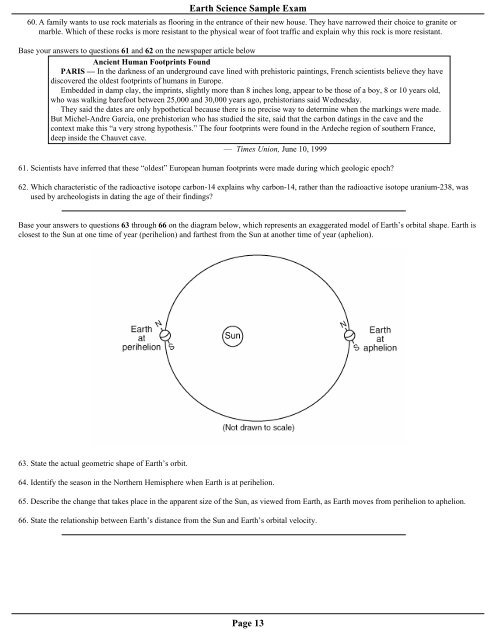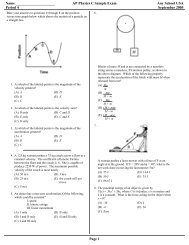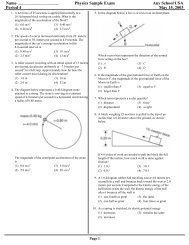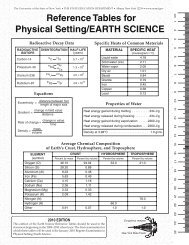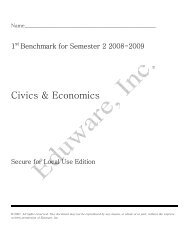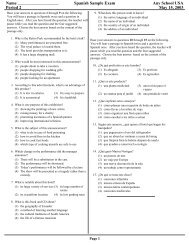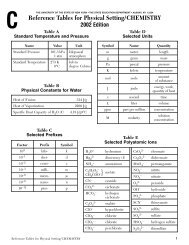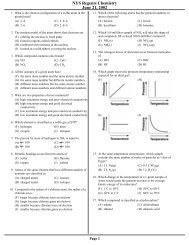Earth Science Sample Exam Any School USA Period 4 ... - Eduware
Earth Science Sample Exam Any School USA Period 4 ... - Eduware
Earth Science Sample Exam Any School USA Period 4 ... - Eduware
You also want an ePaper? Increase the reach of your titles
YUMPU automatically turns print PDFs into web optimized ePapers that Google loves.
<strong>Earth</strong> <strong>Science</strong> <strong>Sample</strong> <strong>Exam</strong><br />
60. A family wants to use rock materials as flooring in the entrance of their new house. They have narrowed their choice to granite or<br />
marble. Which of these rocks is more resistant to the physical wear of foot traffic and explain why this rock is more resistant.<br />
Base your answers to questions 61 and 62 on the newspaper article below<br />
Ancient Human Footprints Found<br />
PARIS — In the darkness of an underground cave lined with prehistoric paintings, French scientists believe they have<br />
discovered the oldest footprints of humans in Europe.<br />
Embedded in damp clay, the imprints, slightly more than 8 inches long, appear to be those of a boy, 8 or 10 years old,<br />
who was walking barefoot between 25,000 and 30,000 years ago, prehistorians said Wednesday.<br />
They said the dates are only hypothetical because there is no precise way to determine when the markings were made.<br />
But Michel-Andre Garcia, one prehistorian who has studied the site, said that the carbon datings in the cave and the<br />
context make this “a very strong hypothesis.” The four footprints were found in the Ardeche region of southern France,<br />
deep inside the Chauvet cave.<br />
— Times Union, June 10, 1999<br />
61. Scientists have inferred that these “oldest” European human footprints were made during which geologic epoch<br />
62. Which characteristic of the radioactive isotope carbon-14 explains why carbon-14, rather than the radioactive isotope uranium-238, was<br />
used by archeologists in dating the age of their findings<br />
Base your answers to questions 63 through 66 on the diagram below, which represents an exaggerated model of <strong>Earth</strong>’s orbital shape. <strong>Earth</strong> is<br />
closest to the Sun at one time of year (perihelion) and farthest from the Sun at another time of year (aphelion).<br />
63. State the actual geometric shape of <strong>Earth</strong>’s orbit.<br />
64. Identify the season in the Northern Hemisphere when <strong>Earth</strong> is at perihelion.<br />
65. Describe the change that takes place in the apparent size of the Sun, as viewed from <strong>Earth</strong>, as <strong>Earth</strong> moves from perihelion to aphelion.<br />
66. State the relationship between <strong>Earth</strong>’s distance from the Sun and <strong>Earth</strong>’s orbital velocity.<br />
Page 13


